- »Mmontessorri« Mexico City, 2022
- »ĉielarka aktivec’« Berlin, 2020
- Group Exhibition »ORTHODOX ABSTRACTION (and of course there was poetry)« Berlin, 2020
- »Nueve años caminando en las laderas« Mexico City, 2018
- »*« Stockholm, 2018
- Group Exhibition »Helen Mirra, Allyson Strafella« Berlin, 2016
- »Helen Mirra« Stockholm, 2015
- Group Exhibition »GATHERED FATES curated by Ignasi Aballí« Berlin, 2015
- Group Exhibition »DRAWN« Berlin, 2014
- Group Exhibition »Umstülpung - curated by Günter Umberg« Berlin, 2012
- »Field Index 3« Stockholm, 2011
- Group Exhibition »Summer Exhibition« Stockholm, 2009
- Group Exhibition »DOG STAR MAN« Berlin, 2009
- »Quarry« Stockholm, 2008
- Group Exhibition »Drawing a Tiger« Berlin, 2007
-
Harsha Menon: A So-called Artist: An Interview with Helen MirraBy Harsha Menon Buddhistdoor Global, 2019
-
Peter Eleey and Helen Mirra: dialogue, april – june 2011, Gehend, Argobooks, 2013
-
Friedrich Meschede: Silvester, Transylvania, Käuzchensteig and more beneath the cloud, Helen Mirra im Grunewald, DAAD, Berlin 2006
-
Rena Leinberger: Interview: Helen Mirra, Bridge, Winter/Spring 2003
-
Jen Bervin: Honest Pen Hospital, Sky-wreck, The Renaissance Society at the University of Chicago, 2002
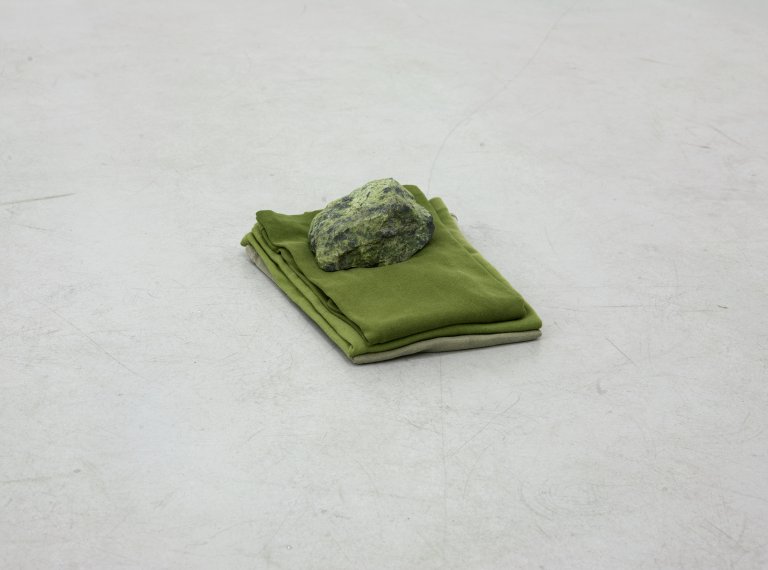
Metamorphosed, 2007, cotton, serpentinite rock with hematite, casein-painted magnesite and chlorite, 10 x 23 x 30 cm
Hendl Helen Mirra »Quarry«
Stockholm, February 17, 2008 - March 20, 2008
Galerie Nordenhake is pleased to present American artist Helen Mirra’s first solo exhibition at the gallery as well as her first show in Sweden. Mirra recently completed a residency at the Office for Contemporary Art Norway (OCA) in September 2007. She will be exhibiting works made during her five-month sojourn in Norway. Tracing the rugged Scandinavian landscape, Mirra employs prevalent, though often unnoticed, materials to investigate the essential and mutable physicality of things and beings.
The exhibition includes works made with alpine plants that Mirra collected while above the Arctic Circle, which are pressed and labeled as is common for both scientific and amateur herbariums, though the plants here are subtle combinations of more than one species. Mirra’s attention to the correct identification of the plants, despite the idiosyncratic nature of the project, suggests a sympathy with the 19th century American poet Emily Dickinson’s own herbarium that she assembled as an adolescent. A method of drawing as much as evidence of a sincere attention to a collection of humble plant specimens, Mirra’s herbarium is indicative of her experience of the visual and the textual as simultaneous. Mirra’s preoccupation with the materiality of how things live in the world can be seen in her floor sculptures, made with rocks she collected while exploring the Norwegian landscape, and pieces of folded, well-worn wool and cotton clothes from her wardrobe. The rocks are also painted, unnoticable to the eye but importantly to the project, as Mirra is not stressing the natural as untouched and the cultural as its opposite, but instead is engaging the always-active relationship between them. Some of the rocks consist mainly of serpentinite, a green mineral, ubiquitous in the earth’s core. Many of the rocks have lichen growing on them, unimpressively but determinedly. The hues of browns and greens, act as an ordering principle in each arrangement, the colors of the rocks and lichens similar to that of the fabrics, implying sympathy between the materials and therefore their inhabitants. The clothing is a stage for the rock, and the rock is holding down the clothing. The glacial, geologic time of the rocks coexists and contrasts with the brevity of the clothed person’s life, while the lichen’s life span is gauged relatively between the two - growing approximately one millimeter a year, and able to live for several centuries, if provided with a minimum of fresh air. The sculptures are small, not unlike bonsai trees, formally austere and scale shifting.
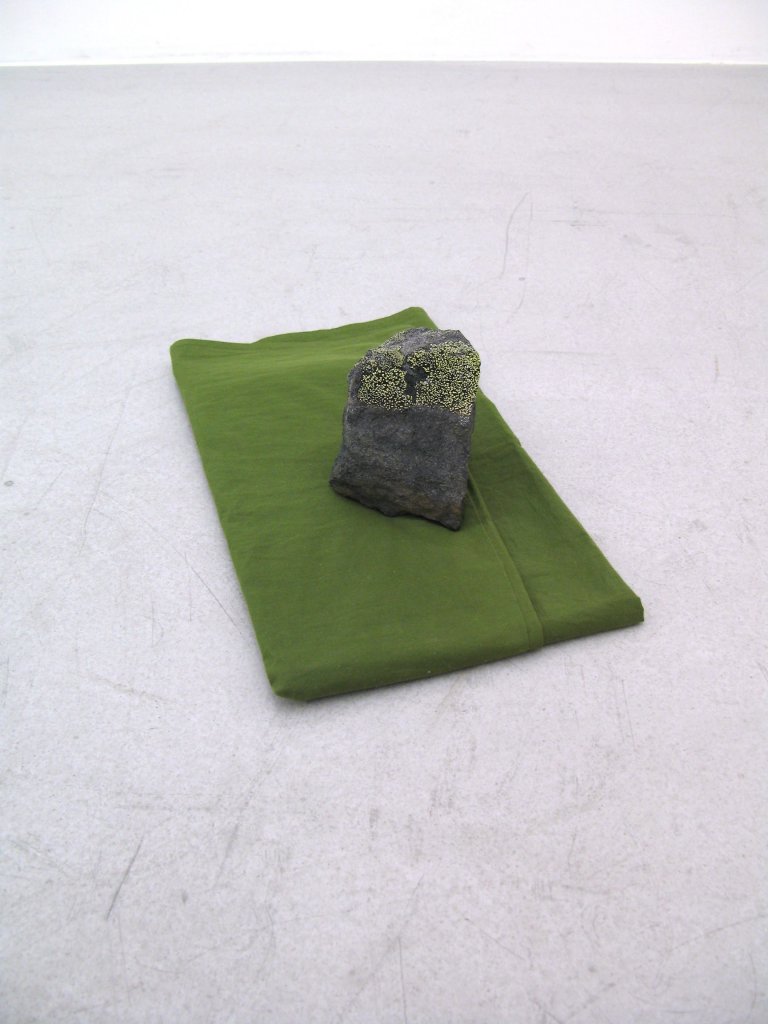
Map lichen, 2007, cotton, breccia rock with casein paint, Rhizocarpon Geographicum Agg., Rhizocarpon Gemantium, or A. Grande & Aspicilia Sp. Lichens, 12 x 24 x 41 cm
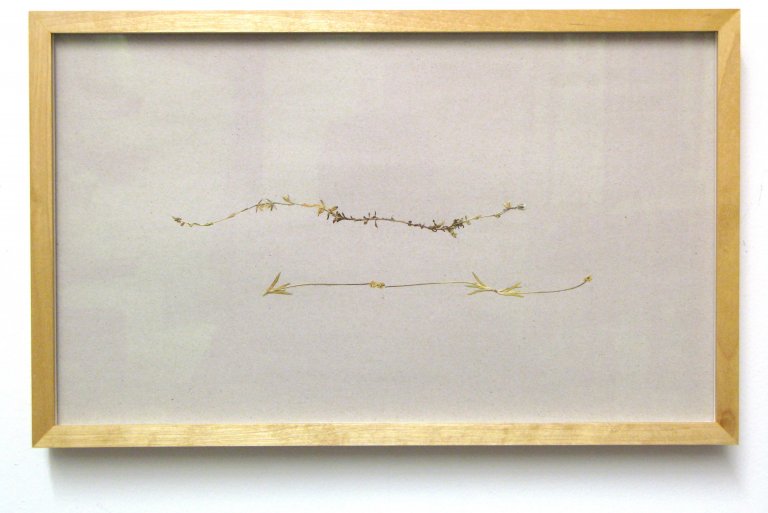
Cerastium alpinum, Alpine mouse-ear, Alpenkraut. Tofieldia pusilla, Small false asphodel, Kleine Simsenlilie, 2007, pressed vascular plants, 29.5 x 48.5 x 4.2 cm
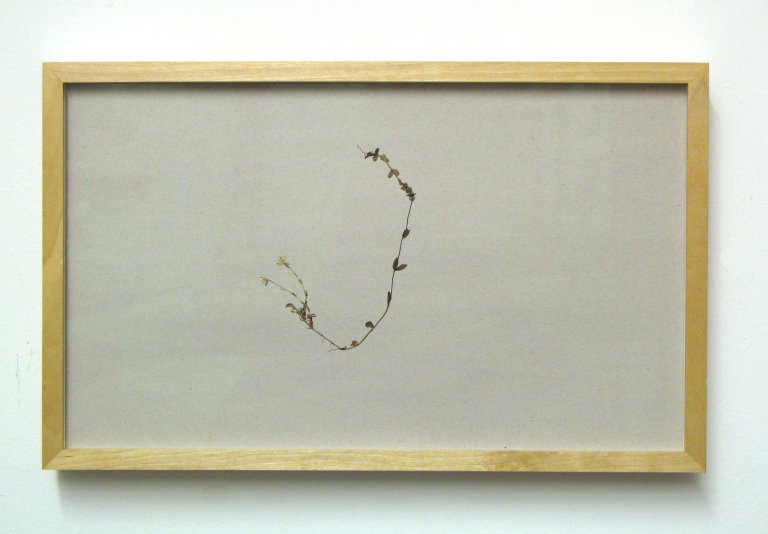
Cerastium alpinum, Veronica alpina, Veronica alpina. (Fjällarv, Fjällveronika, Fjällveronika), 2007, pressed vascular plants, 29.5 x 48.5 x 4.2 cm
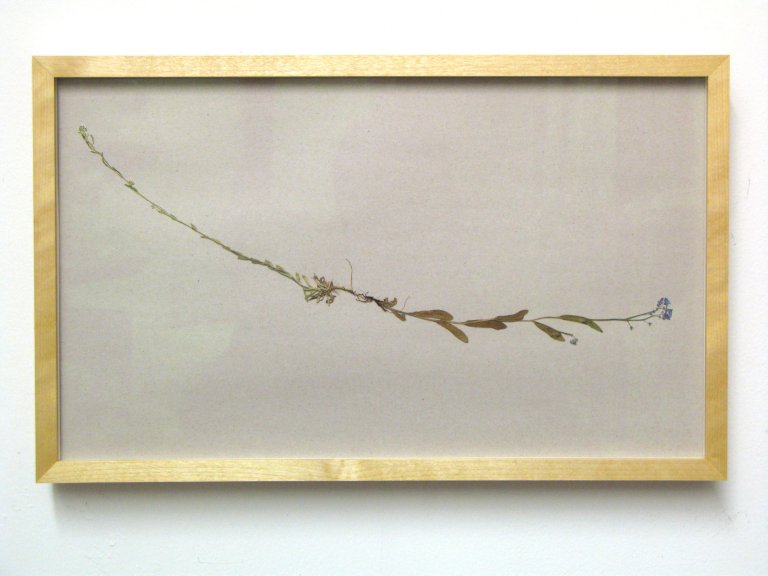
Alchemilla glabra & Myosotis arvensis (Smooth Ladysmantle & Field Forget-me-not), 2007, pressed vascular plants, 29.5 x 48.5 x 4.2 cm
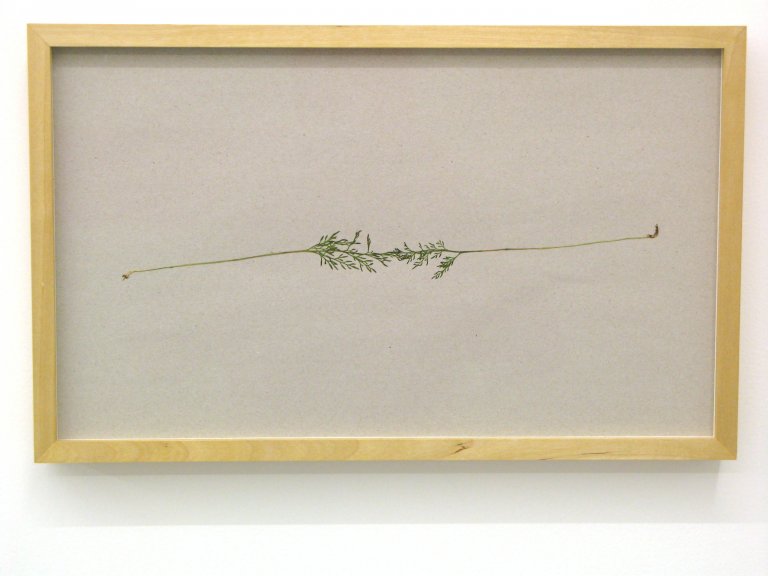
Cryptogramma crispa & Cryptogramma crispa, 2007, pressed vascular plants, 29.5 x 48.5 x 4.2 cm